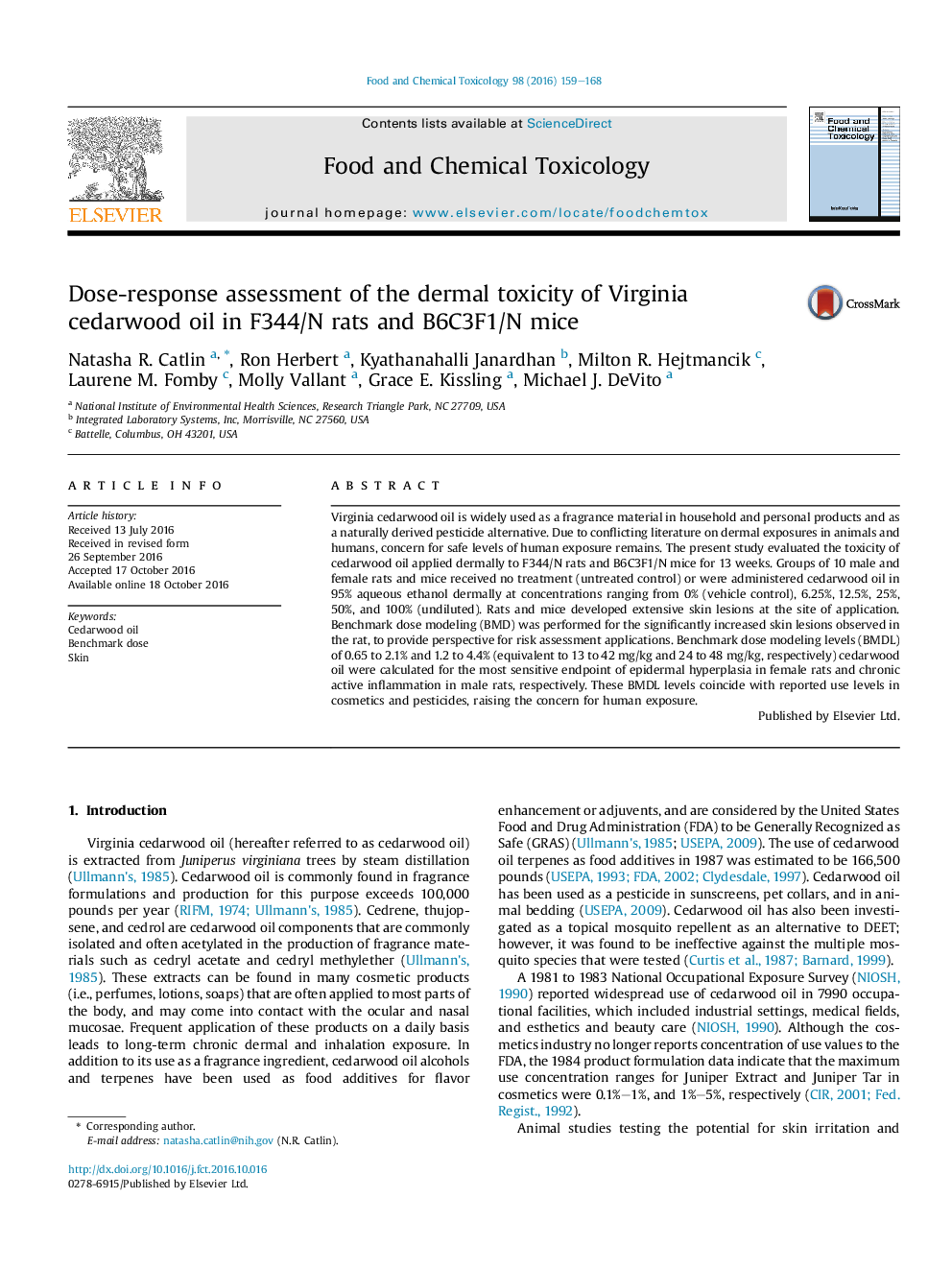| کد مقاله | کد نشریه | سال انتشار | مقاله انگلیسی | نسخه تمام متن |
|---|---|---|---|---|
| 5560406 | 1403319 | 2016 | 10 صفحه PDF | دانلود رایگان |

- Dermal cedarwood oil exposure results in extensive skin lesions at the application site in rodents.
- Benchmark dose modeling (BMD) was performed for these skin lesions in rats.
- Calculated BMD levels coincide with reported use levels in cosmetics and household products.
- BMD levels calculated here can be used in human risk assessment of cedarwood oil.
Virginia cedarwood oil is widely used as a fragrance material in household and personal products and as a naturally derived pesticide alternative. Due to conflicting literature on dermal exposures in animals and humans, concern for safe levels of human exposure remains. The present study evaluated the toxicity of cedarwood oil applied dermally to F344/N rats and B6C3F1/N mice for 13 weeks. Groups of 10 male and female rats and mice received no treatment (untreated control) or were administered cedarwood oil in 95% aqueous ethanol dermally at concentrations ranging from 0% (vehicle control), 6.25%, 12.5%, 25%, 50%, and 100% (undiluted). Rats and mice developed extensive skin lesions at the site of application. Benchmark dose modeling (BMD) was performed for the significantly increased skin lesions observed in the rat, to provide perspective for risk assessment applications. Benchmark dose modeling levels (BMDL) of 0.65 to 2.1% and 1.2 to 4.4% (equivalent to 13 to 42Â mg/kg and 24 to 48Â mg/kg, respectively) cedarwood oil were calculated for the most sensitive endpoint of epidermal hyperplasia in female rats and chronic active inflammation in male rats, respectively. These BMDL levels coincide with reported use levels in cosmetics and pesticides, raising the concern for human exposure.
Journal: Food and Chemical Toxicology - Volume 98, Part B, December 2016, Pages 159-168